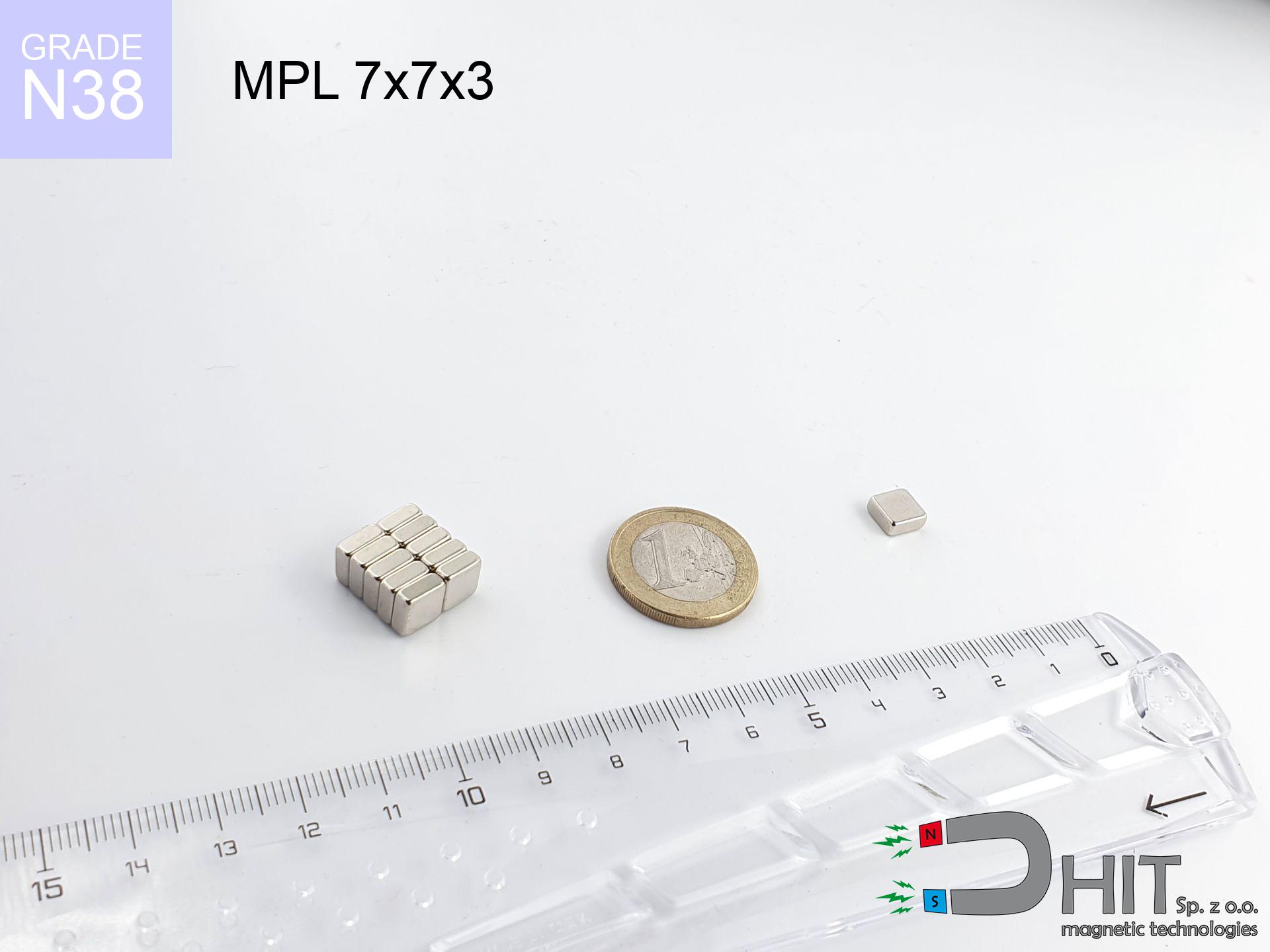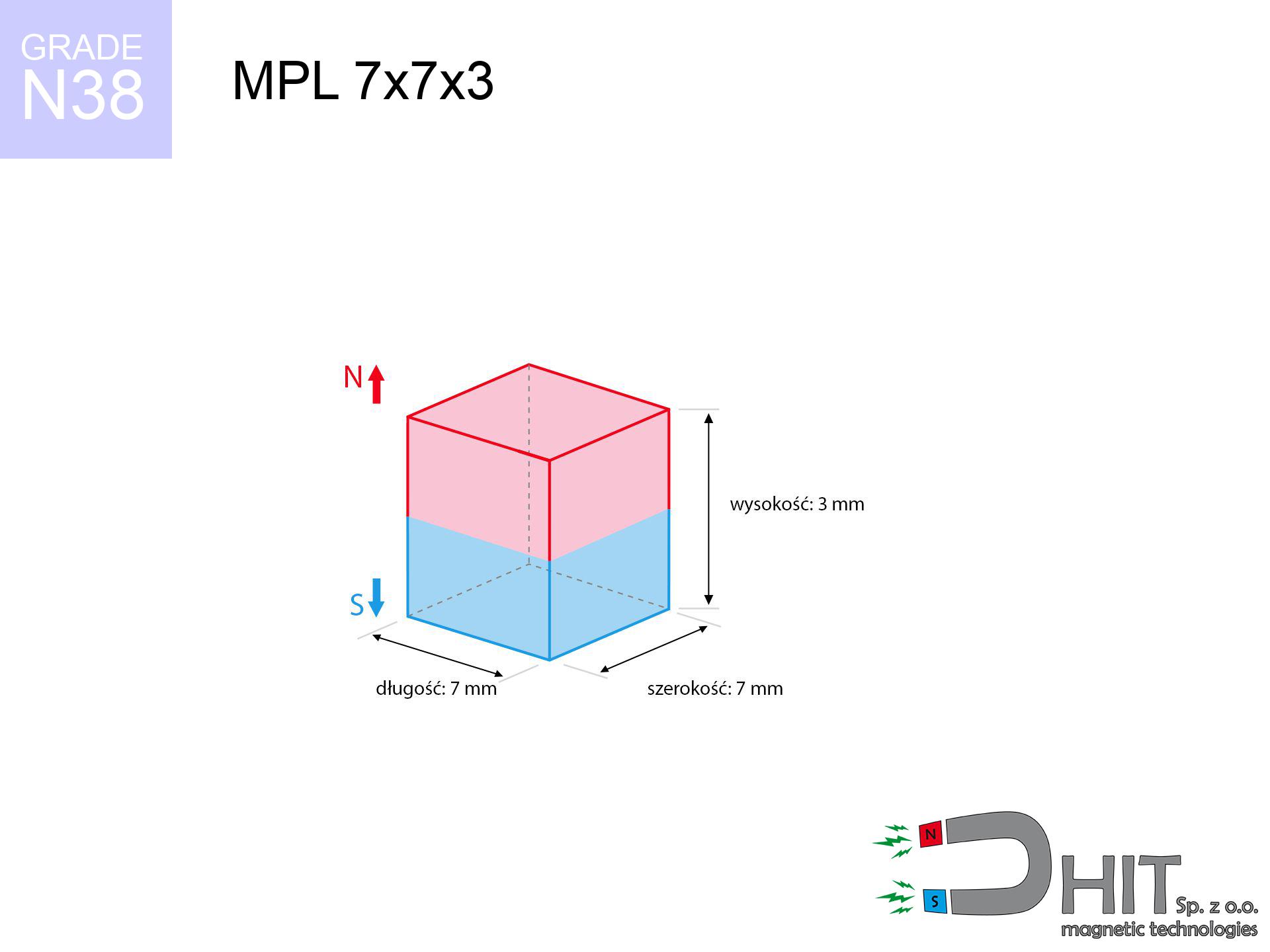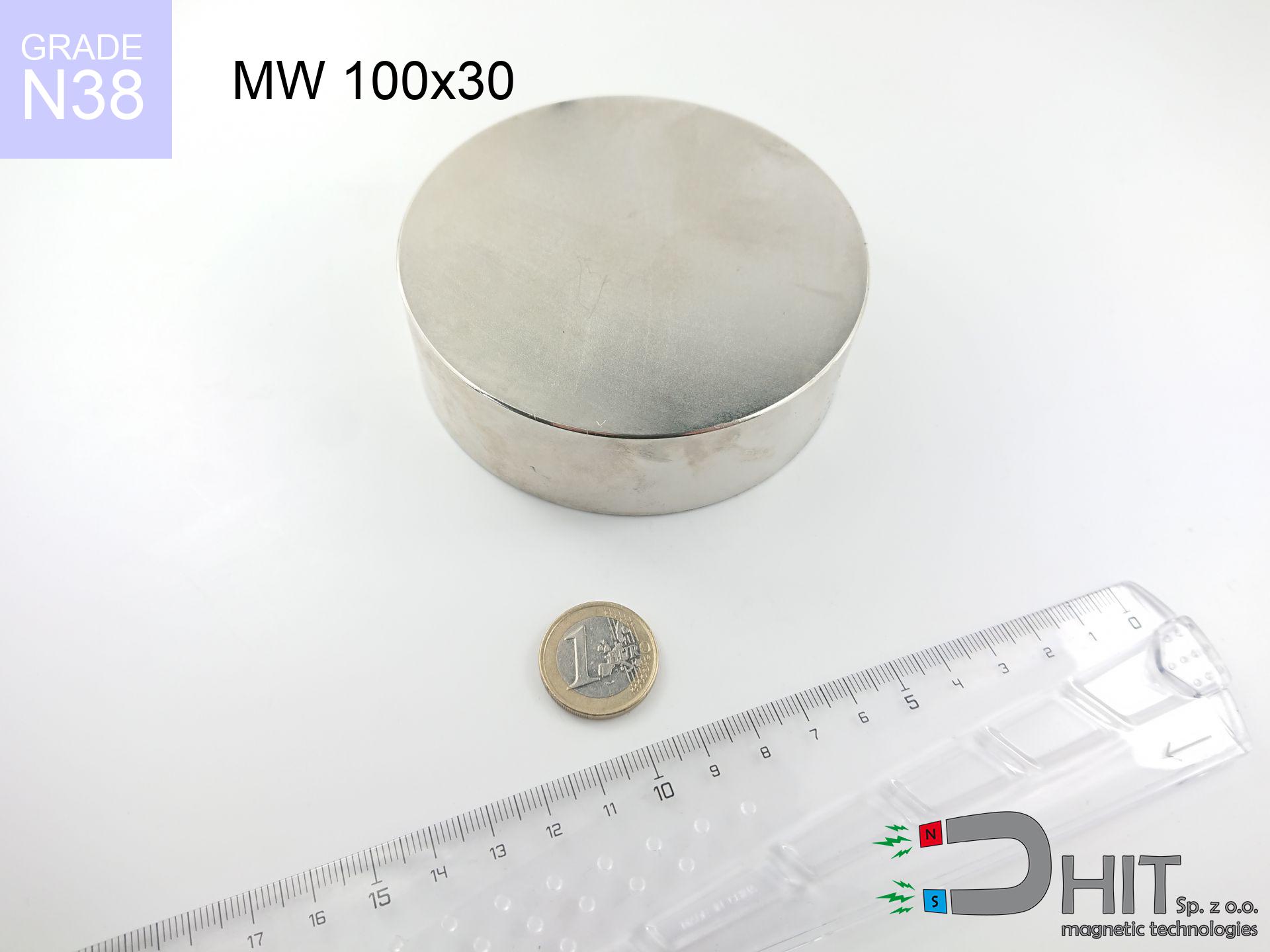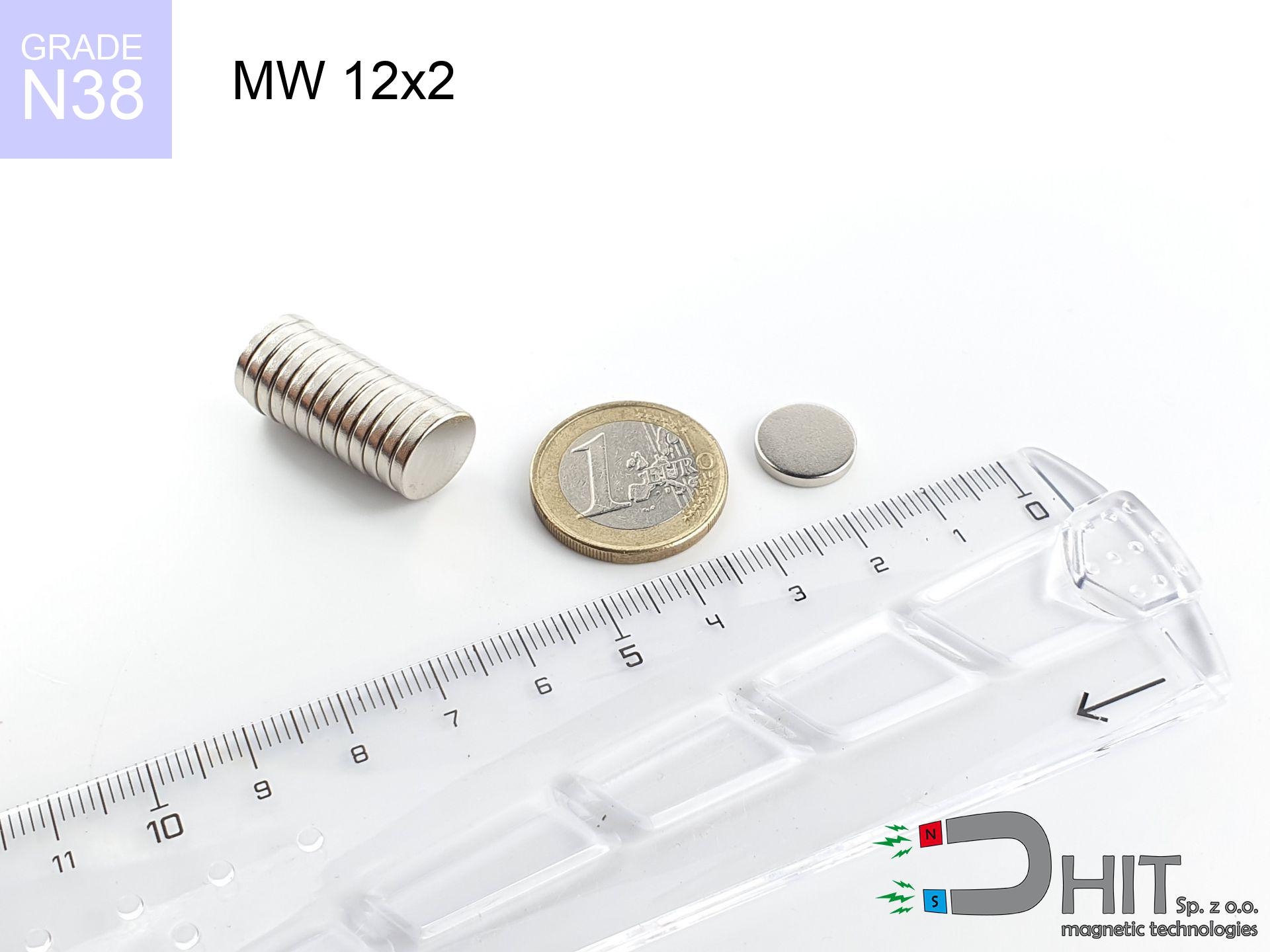MPL 7x7x3 / N38 - lamellar magnet
lamellar magnet
Catalog no 020176
GTIN: 5906301811824
length
7 mm [±0,1 mm]
Width
7 mm [±0,1 mm]
Height
3 mm [±0,1 mm]
Weight
1.1 g
Magnetization Direction
↑ axial
Load capacity
1.66 kg / 16.28 N
Magnetic Induction
376.99 mT
Coating
[NiCuNi] nickel
0.541 ZŁ with VAT / pcs + price for transport
0.440 ZŁ net + 23% VAT / pcs
bulk discounts:
Need more?Can't decide what to choose?
Give us a call
+48 888 99 98 98
if you prefer get in touch via
contact form
the contact page.
Strength and structure of neodymium magnets can be estimated on our
power calculator.
Same-day processing for orders placed before 14:00.
Magnetic properties of material N38
Physical properties of sintered neodymium magnets Nd2Fe14B at 20°C
Shopping tips
Pros as well as cons of rare earth magnets.
Besides their durability, neodymium magnets are valued for these benefits:
- They virtually do not lose power, because even after 10 years the performance loss is only ~1% (according to literature),
- Magnets effectively protect themselves against loss of magnetization caused by external fields,
- A magnet with a shiny nickel surface has better aesthetics,
- Magnets are distinguished by maximum magnetic induction on the outer side,
- Made from properly selected components, these magnets show impressive resistance to high heat, enabling them to function (depending on their form) at temperatures up to 230°C and above...
- Possibility of custom modeling and modifying to atypical requirements,
- Huge importance in electronics industry – they find application in hard drives, drive modules, advanced medical instruments, and other advanced devices.
- Relatively small size with high pulling force – neodymium magnets offer high power in compact dimensions, which enables their usage in miniature devices
What to avoid - cons of neodymium magnets and ways of using them
- They are prone to damage upon too strong impacts. To avoid cracks, it is worth protecting magnets in special housings. Such protection not only shields the magnet but also increases its resistance to damage
- Neodymium magnets lose force when exposed to high temperatures. After reaching 80°C, many of them experience permanent drop of strength (a factor is the shape and dimensions of the magnet). We offer magnets specially adapted to work at temperatures up to 230°C marked [AH], which are extremely resistant to heat
- When exposed to humidity, magnets start to rust. For applications outside, it is recommended to use protective magnets, such as those in rubber or plastics, which prevent oxidation as well as corrosion.
- We suggest a housing - magnetic mount, due to difficulties in realizing nuts inside the magnet and complicated forms.
- Potential hazard resulting from small fragments of magnets can be dangerous, when accidentally swallowed, which becomes key in the context of child health protection. It is also worth noting that small components of these devices are able to disrupt the diagnostic process medical in case of swallowing.
- High unit price – neodymium magnets cost more than other types of magnets (e.g. ferrite), which hinders application in large quantities
Maximum lifting force for a neodymium magnet – what affects it?
Holding force of 1.66 kg is a result of laboratory testing performed under specific, ideal conditions:
- on a block made of mild steel, effectively closing the magnetic field
- with a cross-section no less than 10 mm
- with an ground touching surface
- without any clearance between the magnet and steel
- during pulling in a direction vertical to the plane
- at ambient temperature approx. 20 degrees Celsius
Determinants of lifting force in real conditions
Holding efficiency is affected by working environment parameters, mainly (from most important):
- Space between surfaces – even a fraction of a millimeter of separation (caused e.g. by varnish or dirt) diminishes the pulling force, often by half at just 0.5 mm.
- Pull-off angle – remember that the magnet has greatest strength perpendicularly. Under sliding down, the holding force drops significantly, often to levels of 20-30% of the maximum value.
- Wall thickness – the thinner the sheet, the weaker the hold. Part of the magnetic field penetrates through instead of converting into lifting capacity.
- Plate material – low-carbon steel gives the best results. Alloy admixtures reduce magnetic properties and lifting capacity.
- Surface finish – full contact is obtained only on polished steel. Rough texture reduce the real contact area, weakening the magnet.
- Temperature influence – high temperature weakens pulling force. Exceeding the limit temperature can permanently damage the magnet.
* Lifting capacity testing was carried out on plates with a smooth surface of suitable thickness, under a perpendicular pulling force, however under shearing force the lifting capacity is smaller. Additionally, even a small distance {between} the magnet’s surface and the plate decreases the load capacity.
H&S for magnets
Skin irritation risks
Certain individuals have a sensitization to nickel, which is the standard coating for neodymium magnets. Extended handling may cause skin redness. It is best to use protective gloves.
Physical harm
Protect your hands. Two powerful magnets will snap together instantly with a force of massive weight, destroying anything in their path. Be careful!
Keep away from children
Absolutely store magnets out of reach of children. Choking hazard is high, and the consequences of magnets connecting inside the body are tragic.
Magnetic interference
Be aware: rare earth magnets generate a field that confuses precision electronics. Keep a safe distance from your mobile, device, and GPS.
Dust is flammable
Fire warning: Rare earth powder is highly flammable. Avoid machining magnets without safety gear as this risks ignition.
Threat to electronics
Powerful magnetic fields can destroy records on payment cards, hard drives, and storage devices. Maintain a gap of min. 10 cm.
Do not underestimate power
Use magnets with awareness. Their immense force can shock even experienced users. Be vigilant and respect their force.
Permanent damage
Regular neodymium magnets (N-type) undergo demagnetization when the temperature exceeds 80°C. This process is irreversible.
Fragile material
NdFeB magnets are ceramic materials, which means they are fragile like glass. Collision of two magnets leads to them breaking into shards.
Medical interference
Individuals with a pacemaker should keep an safe separation from magnets. The magnetic field can stop the functioning of the life-saving device.
Security!
Details about hazards in the article: Magnet Safety Guide.









